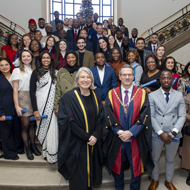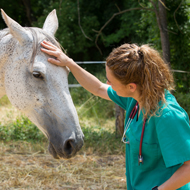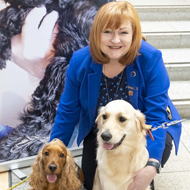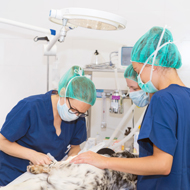Dolly with Sir Ian Wilmut, who led the team that created her.
Cloned sheep Dolly to feature in Scottish exhibition
Dolly the sheep will be the star of an exhibition celebrating 100 years of genetic science in Edinburgh.
Titled 'Towards Dolly', the exhibition will showcase pioneering discoveries that have taken place in the city, taking visitors literally 'towards Dolly' and beyond.
As the first animal to be cloned from an adult cell, Dolly is arguably the world's most famous sheep. Her creation proved it was possible to take cells from anywhere in the body and make them act like a newly fertilised egg.
This discovery paved the way for regenerative medicine and the use of stem cells to investigate fundamental human and animal biology.
"Dolly is the most famous chapter in Edinburgh’s long genetics history," said curator Clare Button.
The exhibition will take place at the University of Edinburgh, featuring rare books, archive documents, pictures and sound and film clips.
Artefacts of note will include the microscope used to create the cloned embryo which led to Dolly's birth and photos from early breeding studies with zebras and horses. This research helped scientists to understand how physical characteristics such as coat colour and markings are passed from one generation to the next.
Visitors will also be able to see the archives of Professor Charlotte Auerbach, who carried out pioneering research on genetic mutations. This work took place from the 1930s onwards and laid the foundations for the use of mutations to discover how genes work.
Dolly is on loan from the National Museums Scotland and will be on display at the university's main library exhibition gallery from 31 July-31 October, 2015. The gallery is open Monday-Saturday from 10am-5pm and admission is free.
Image © Dave Cheskin







 The RCVS has announced a new version of its 1CPD mobile app, with enhanced features for veterinary surgeons and veterinary nurses to record their continuing professional development.
The RCVS has announced a new version of its 1CPD mobile app, with enhanced features for veterinary surgeons and veterinary nurses to record their continuing professional development.
